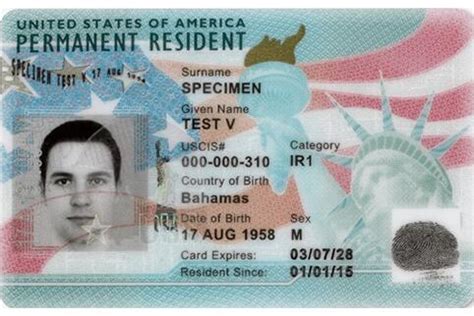Constitution Of The United States Framed

The Constitution of the United States, framed in 1787, is the foundational document of the United States government. It outlines the framework of the federal government and the relationship between the government and the citizens of the United States. The Constitution is composed of a preamble, seven articles, and a bill of rights, which includes the first ten amendments to the document. The preamble, which serves as an introduction to the Constitution, states the purpose and objectives of the document, including the establishment of justice, insuring domestic tranquility, providing for the common defense, promoting the general welfare, and securing the blessings of liberty to ourselves and our posterity.
Historical Context and Framing

The Constitution was framed during the Philadelphia Convention, which took place from May 25 to September 17, 1787. The convention was attended by seventy-four delegates from twelve states, with notable figures such as George Washington, James Madison, and Benjamin Franklin playing key roles in the drafting process. The delegates were tasked with revising the Articles of Confederation, but they ultimately decided to create a new document that would serve as the foundation of the federal government. The Constitution was influenced by various sources, including the British Constitution, the Magna Carta, and the writings of Enlightenment thinkers such as John Locke and Montesquieu.
Key Provisions and Principles
The Constitution establishes the principles of federalism, individual rights, and the separation of powers. Article I establishes the legislative branch, comprising Congress, which is divided into the House of Representatives and the Senate. Article II establishes the executive branch, headed by the President, while Article III establishes the judicial branch, comprising the Supreme Court and lower federal courts. The Constitution also outlines the process of amendment, which has been used to modify the document over time. The Bill of Rights, added in 1791, guarantees individual liberties such as freedom of speech, press, and assembly, as well as the right to bear arms and protection against unreasonable searches and seizures.
| Article | Description |
|---|---|
| I | Legislative Branch |
| II | Executive Branch |
| III | Judicial Branch |
| IV | States, Citizenship, and Territory |
| V | Amendment Process |
| VI | Debts, Supremacy, and Oaths |
| VII | Ratification |

Key Points
- The Constitution is the foundational document of the United States government, outlining the framework of the federal government and the relationship between the government and citizens.
- The document is composed of a preamble, seven articles, and a bill of rights, which includes the first ten amendments.
- The Constitution establishes the principles of federalism, individual rights, and the separation of powers, with the legislative, executive, and judicial branches.
- The Bill of Rights guarantees individual liberties, such as freedom of speech and assembly, and protection against unreasonable searches and seizures.
- The Constitution has been amended over time, with the process of amendment outlined in Article V.
Evolution and Interpretation

The Constitution has undergone significant changes and interpretations since its ratification in 1788. The document has been amended twenty-seven times, with the most significant amendments being the Bill of Rights and the Reconstruction Amendments, which abolished slavery and established citizenship and voting rights for African Americans. The Supreme Court has played a crucial role in interpreting the Constitution, with landmark cases such as Marbury v. Madison (1803) and Brown v. Board of Education (1954) shaping the document’s meaning and application. The Constitution’s flexibility and adaptability have allowed it to endure for over two centuries, with its principles and provisions continuing to shape American politics, law, and society.
Impact and Influence
The Constitution’s impact and influence extend beyond the United States, with its principles and provisions serving as a model for democratic institutions around the world. The document’s emphasis on individual rights, federalism, and the separation of powers has influenced the development of constitutions in countries such as France, Germany, and Japan. The Constitution’s system of checks and balances has also been adopted by other countries, with the aim of preventing the concentration of power and protecting individual liberties. As a foundational document, the Constitution continues to shape American politics, law, and society, with its provisions and principles remaining relevant and influential in the twenty-first century.
What is the purpose of the Constitution's preamble?
+The preamble serves as an introduction to the Constitution, stating the purpose and objectives of the document, including the establishment of justice, insuring domestic tranquility, providing for the common defense, promoting the general welfare, and securing the blessings of liberty to ourselves and our posterity.
What are the three branches of government established by the Constitution?
+The Constitution establishes the legislative, executive, and judicial branches, with the legislative branch comprising Congress, the executive branch headed by the President, and the judicial branch comprising the Supreme Court and lower federal courts.
What is the significance of the Bill of Rights?
+The Bill of Rights guarantees individual liberties, such as freedom of speech, press, and assembly, and protection against unreasonable searches and seizures, and has played a crucial role in shaping American politics, law, and society.
In conclusion, the Constitution of the United States is a foundational document that has shaped the development of American politics, law, and society. Its principles and provisions, including the system of checks and balances, individual rights, and federalism, have endured for over two centuries, with its influence extending beyond the United States to shape democratic institutions around the world. As a living document, the Constitution continues to evolve and adapt, with its provisions and principles remaining relevant and influential in the twenty-first century.



